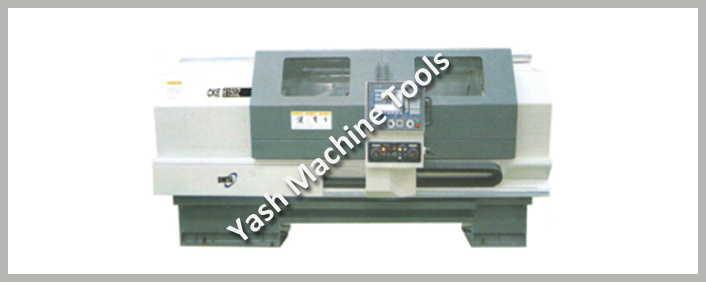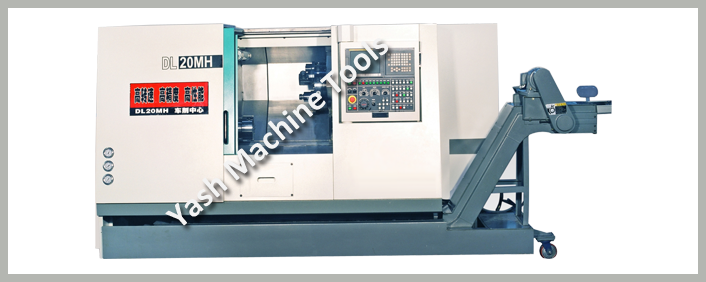European Regulations and Standards for CNC Lathe Safety and Compliance
In the realm of manufacturing, safety and compliance are paramount. This is especially true when it comes to the operation of Computer Numerical Control (CNC) lathe machines, which are integral to precision machining processes. To ensure the well-being of workers and the integrity of production, European regulations and standards play a crucial role in guiding the design, operation, and maintenance of CNC lathe machines. In this article, we’ll delve into the regulations and standards that govern CNC lathe safety and compliance within the European context.
Introduction
The precision and capabilities of CNC lathe machines are undeniable assets in modern manufacturing. However, their operation involves inherent risks that can impact both human operators and production processes. European regulations and standards provide a framework to minimize these risks, ensuring the safe and compliant operation of CNC lathe machines.
The Significance of Safety and Compliance
Protecting Workers and Processes
Safety regulations for CNC lathe machines prioritize the well-being of workers. By implementing safety measures, operators can perform their tasks with reduced risk of accidents, injuries, or exposure to hazardous situations.
Ensuring Quality and Reliability
Compliance with standards not only safeguards workers but also maintains the quality and reliability of manufactured components. Safe machine operation directly contributes to consistent production outcomes and reduces the likelihood of defects.
European Regulations for CNC Lathe Safety
Machinery Directive 2006/42/EC
The Machinery Directive lays the foundation for ensuring the safety of machinery, including CNC lathe machines, within the European Union. It outlines essential requirements for design, manufacturing, and placing machinery on the market.
ISO 23125:2020 Standard
The ISO 23125 standard specifically addresses the safety of CNC turning machines. It provides guidelines for risk assessment, protective measures, and safety-related control systems, ensuring the safe operation of these machines.
Compliance with EN Standards
EN 60204-1:2018
This standard focuses on electrical equipment of machines, including CNC lathe machines. It covers aspects such as electrical supply, control circuits, and safety-related electrical control systems.
EN ISO 12100:2010
EN ISO 12100 outlines general principles for designing safe machinery. It emphasizes risk assessment, providing a systematic approach to identifying and mitigating potential hazards associated with CNC lathe machines.
Safeguarding Operators and Environments
Risk Assessment and Mitigation
Manufacturers and employers are required to conduct comprehensive risk assessments for CNC lathe machines. This process identifies potential hazards and determines appropriate measures to reduce or eliminate risks.
Safety Interlocks and Emergency Stops
CNC lathe machines must be equipped with safety interlocks and emergency stops to quickly halt machine operation in hazardous situations. These features empower operators to intervene effectively in emergencies.
The Role of Manufacturers and Employers
Designing for Safety
Manufacturers play a pivotal role in CNC lathe safety by designing machines that adhere to European regulations and standards. This includes incorporating safety features, providing clear instructions, and facilitating maintenance.
Training and Education
Employers are responsible for providing adequate training and education to CNC lathe operators. This ensures that operators are proficient in safe machine operation, emergency procedures, and hazard recognition.
Continuous Improvement and Adaptation
Evolving Regulations
European regulations and standards for CNC lathe safety are subject to updates and revisions to address emerging challenges and technological advancements. Staying informed about these changes is crucial for maintaining compliance.
Technological Advances
As CNC lathe machines evolve with technology, safety measures must adapt accordingly. Manufacturers and operators should be vigilant in adopting new safety features and practices to keep pace with innovation.
Conclusion
The integration of CNC lathe machines into modern manufacturing processes underscores the importance of safety and compliance. European regulations and standards provide a robust framework that protects workers, ensures production quality, and fosters a culture of safety. By adhering to these regulations, manufacturers and employers contribute to a safer and more efficient manufacturing landscape, where CNC lathe machines can operate with precision and reliability while prioritizing the well-being of those who operate them.
- How Lathe Machine Manufacturers are Powering the Nation’s Engineering Growth in Canada?
- How Chamfer Machines Are Streamlining Metalwork in the UK’s Manufacturing Sector?
- How Feed Rate Adjustments Improve Surface Finish in Vertical CNC Milling Machines?
- How Radial Drilling Machines Achieve Low Vibration and Distortion Resistance?
- From Design to Execution: How CNC Press Brakes Ensure Seamless Workflow
- How to Optimize Sheet Metal Operations Using a Hydraulic Press Brake?




